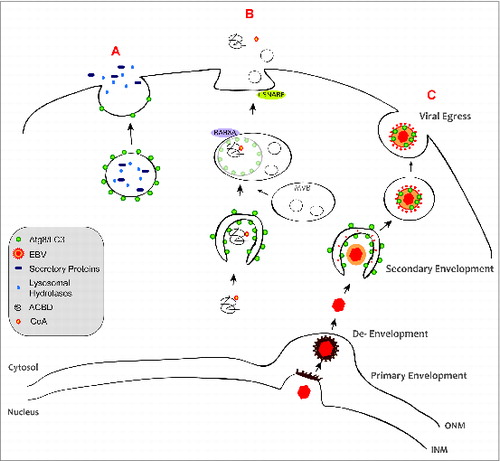Figures & data
Figure 1. Autophagic membranes participate in unconventional secretion. (A) Dual-function lysosomes, called secretory lysosomes, contain the relevant degradative proteins and can store newly synthesized cell-specific secretory proteins, e.g. cathepsins, PRF1/perforin, and granzymes. (B) During exophagy, ACBD is engulfed by autophagic membranes, which then fuse with MVBs. These subsequently fuse with the plasma membrane and release ACBD into the extracellular milieu. t-SNAREs are required for exophagy, whereas lysosomal fusion is dispensable. (C) During viral exophagy, the EBV nucleocapsid exits the nucleus through the acquisition of an envelope at the inner nuclear membrane (INM). This primary envelope is retained at the outer nuclear membrane (ONM), leading to the release of unenveloped capsid into the cytosol. The cytosol-located capsid undergoes a secondary envelopment step by fusion of vesicles decorated with viral glycoproteins and LC3B-II. Fusion of vesicles, containing the viral particles, with the plasma membrane releases the mature virion into the extracellular milieu.

